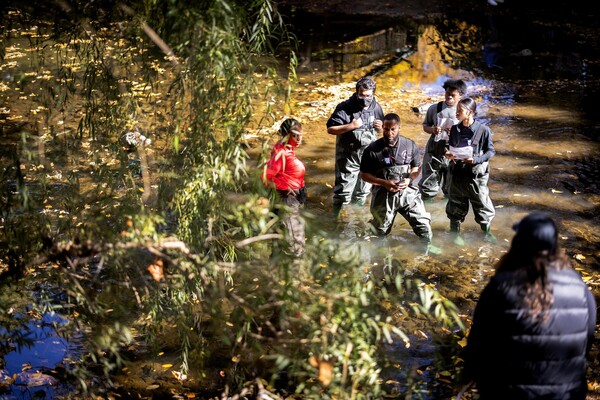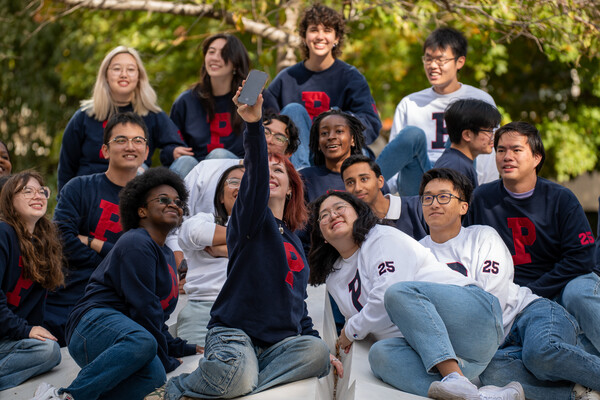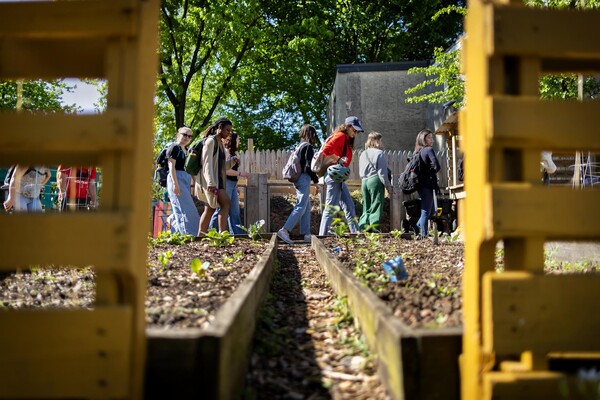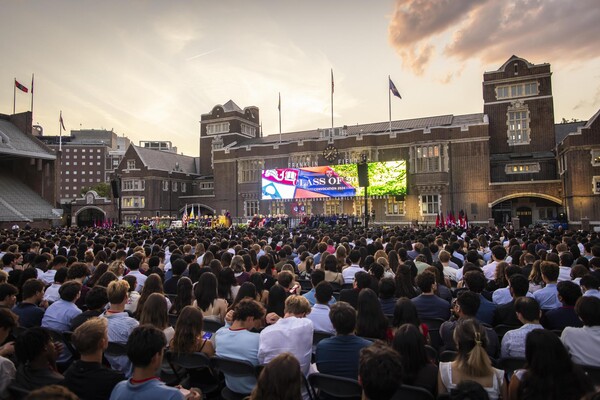
It’s 9:45 p.m. and eerily quiet at the Penn Museum. Outside, it’s dark and rainy. Inside, a group of families are preparing for the main event on this Friday night: a flashlight expedition of the Museum’s galleries.
Already, the children and their chaperones here for the 40 Winks sleepover have tucked away their sleeping gear inside the Egypt Gallery. They’ve played a round of the “What in the World?” game show, at one time a staple of Philadelphia television.
Some have worked on a scavenger hunt, finding their way around the Museum to find clues. Others have learned about ancient Egyptian hieroglyphs and even tried their hand at writing their names, learned about the Lakota legend of the dreamcatcher and made their own, or handled animal bones to learn more about physical anthropology.
The Museum has been hosting 40 Winks events for a decade, beginning after the “Night at the Museum 2” movie was released in 2009. Children between the ages of 6 and 12 and accompanying grown-ups can attend.
It’s part of a larger slate of family-oriented programming that includes Second Saturday events and CultureFest!, a series of festivals each oriented around a different culture, including the upcoming Africa-focused event May 4. The Museum also runs the popular Anthropologists in the Making summer camp.
Rachelle Kaspin, the Museum’s public programs coordinator, said 40 Winks was started to create a program with an impact on families who come to the Museum.
“It has really become one of the Museum’s most talked-about family programs. It’s a great way to get the public excited about the objects and galleries in a whole new way—in the dark with a flashlight,” she says.
Now, it’s time for the lights to go off and the big adventure to begin. Flashlights—and mobile phone lights—bobbing, the group makes its way up stairs to the third floor, through the Egypt gallery and into the mummy room. The children gather around a small glass case and shine their lights inside, illuminating a mummy of a small child.
In the dim light, it’s easy to imagine what it was like inside one of ancient Egypt’s burial chambers. The flashlights make it feel different, maybe even a bit spooky.
The children, however, aren’t fazed. They’re giggling and chattering away, answering questions from a Museum guide and posing more. They’re clearly thrilled by the heady combination of being awake so late, the darkness, and the chance to see what few others can.
The next stop is the Rome gallery, where Megan Becker, an Unpacking the Past museum educator and access programs specialist at the Museum, shows the group the Puteoli Marble block, originally carved during the reign of the Roman Emperor Domitian.
After his death, she says, the inscription about him was chiseled away, something that was known as “damnatio memoriae,” Latin for “erasing the memory.” The block was reused in an arch of Trajan in Puteoli, near Naples.
The third and final stop is inside the Native American Voices exhibit, where the children gasp at the idea that some of the spear tips on display are around 12,000 years old, made by people who came to North America around 15,000 years ago. They also get a quick lesson on carbon dating, after one child asks how archaeologists know how old something is.
It’s 10:30, and it’s clear most of the kids are fading. Each group spreads out sleeping bags, camping pads, and pillows amid the statues in the Egypt gallery. The lights go out at 11:15 p.m. and come back on at 7 a.m.
Morning means breakfast: scrambled eggs, French toast, doughnuts, and bagels, plus coffee for the adults and chocolate milk for the kids. It’s time to pack up, too, since the Museum opens to the public at 10 a.m. Families are welcome to stay but have to remove their overnight gear.
At checkout, each child gets a patch that gets them into the Museum for free through the summer.
The verdict from a 9-year-old? “This is so cool,” he says. “Can we do this again?”
The enthusiasm of the children is shared by the adults who work with them. Kaspin said that students who have graduated and gone on to be professors have said being a part of 40 Winks helped them learn to teach in the real world.
“That intimate experience paired with knowledgeable staff, mostly made up of Penn grad students, really gives support to part of the Museum’s mission, which is to unlock the wonder of the human story,” she says. “It is also a great way to get Penn students involved with public programming and the Museum as a whole.”
The next 40 Winks sleepovers are May 10 and 31. The cost is $55 per person and $45 per person for Museum members; for the May events, use the discount code 40SPRING to get $33 tickets.
Regular admission to the Museum is free for PennCard holders, $15 for general adult admission, and $10 for children ages 6 to 17.










